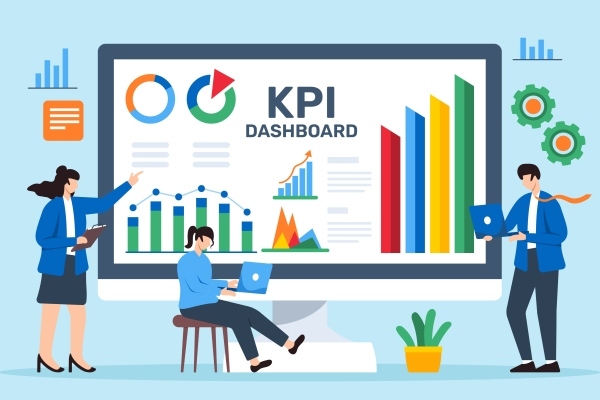
How to use social media to drive website traffic
Social media is a powerful tool for driving website traffic and conversions. By leveraging the power of social media platforms like Facebook, Twitter, TikTok and Instagram, businesses can reach a wide audience and direct them to their website, where they can convert them into customers.
Strengthening Your Social Media Presence
As a business owner, having an effective social media presence is essential for success in the digital age. Establishing and maintaining a strong presence on your chosen social media platform can be challenging, however. It requires dedication, consistency, and creativity to make sure your online presence stands out from the competition.
Here are some tips for creating a powerful social media presence that will help you reach more customers and engage them more effectively.
Optimising your Bio
Make sure that your profiles across all platforms include a succinct bio that explains how you help your customers. Include links to those places you want people to go. This could be your website, sales page, freebie lead magnet, community group or another social media account.
Knowing Your Audience
Knowing who you’re trying to reach will help shape the type of content you create and the tone of voice you use when communicating with them. This information can be gathered through researching your target market’s demographics or by analysing customer feedback from previous interactions or campaigns. Or by simply asking your existing customers what kind of content they would find most interesting and where they hang out across different social media networks.
Create Quality Content
There’s that phrase again ‘quality content’ and I know you are probably fed up of hearing me go on about it. But creating quality content is paramount when it comes to social media marketing. Social media posts should be relevant to your brand’s message and resonate with your target audience. This can include anything from links to blog posts, videos, infographics, or even live streams—whatever works best for conveying whatever message or emotion you want to share with your followers. Quality content also helps establish trust between you and your customers, which can lead to higher engagement rates on all of your posts.
Make sure you post regularly and your message is consistent. To help drive traffic to your website use links to a blog post or sales page in your social media posts.
Focus on Engagement
There is no point having thousands of follows on Instagram if no one is engaging with your content. The more people engage with your posts (likes, shares, comments), the higher visibility they receive and the more followers you gain as a result.
Focus on responding quickly and engagingly whenever someone interacts with one of your posts; this shows that you value their input and encourages further interaction from them down the road. Asking questions is a great way of encouraging your audience to converse with you and visual content will help ensure your posts are seen, so include images on all of your posts.
Make It Shareable
The last step in creating valuable social media content is making sure it’s shareable across different social media networks. This means finding ways to make it easily sharable across different platforms, as well as ensuring that it contains visuals such as images and videos that grab attention quickly on social media feeds where people are scrolling quickly through dozens of other posts each day.
Social Media Ads to help drive website traffic

Before you start you do need to understand what your KPI’s (key performance metrics) will be, there is no point running an ad campaign if that doesn’t result in a healthy ROI. So make sure you understand your numbers before you start, if you are starting from scratch then take the first months data to decide how effective the campaign is.
1. Choose Your Social Media Platforms
The first step in creating a successful social media ad is to select the right platform for your ad campaign. Different platforms have different audiences, so it’s important to identify which platforms are best suited for your target demographic. Consider factors such as age group, geographic location, gender, interests, etc., when deciding which platform is right for you.
2. Set Your Budget
Once you’ve chosen your platform or platforms, it’s time to set a budget for your ad campaign. Many platforms offer flexible pricing models that allow you to control how much money you spend per month or per day on ads. It’s important to plan ahead and decide how much money you can afford (or are willing) to spend on advertising each month or each week.
3. Choose Your Ad Type
Different platforms offer different types of ads, such as video ads, display ads, sponsored posts, etc., so it’s important that you choose the type of ad that best suits your needs and goals for the campaign. Keep in mind that some types of ads may be more expensive than others, so make sure that you factor this into your budget before selecting a type of ad for your campaign.
4 Create Your Ad Content
Once you’ve chosen the type of ad that best fits your needs and goals, it’s time to create the content for your ad campaign. Make sure that all content is high quality and engaging; use bright colours and visual content when applicable; include calls-to-action; keep text brief but informative; and make sure all content reflects the overall message of your brand/business/product/service/etc..
Also remember to review any guidelines provided by each platform regarding acceptable content before creating any ads!
How to Take Advantage of Unique Tracking Links for Social Media Traffic
 What are Unique Tracking Links?
What are Unique Tracking Links?
Unique tracking links are short URLs that have been specifically created for use on social media accounts to track the effectiveness of a particular campaign or post. They allow you to see exactly where each click came from, so you can better understand which posts or campaigns were most successful in driving social media traffic to your website. This data can then be used to refine future posts and campaigns, making them even more effective.
The Benefits of Using Unique Tracking Links
Unique tracking links offer several key benefits in terms of helping you track your social media performance. First, they provide insights into which platforms are driving the most traffic and generating the most leads or sales. Second, they allow you to identify which content is resonating with users most effectively, enabling you to create similar content in the future. Finally, they make it easy to compare different campaigns side-by-side so that you can optimize your efforts over time and get the best possible results from each post or campaign.
How To Get Started With Unique Tracking Links
Using unique tracking links is easy — all you need is a link shortening tool like Bitly or Rebrandly. Simply enter your long URL into one of these tools and it will generate a shortened version that includes a unique identifier code at the end (e.g., “examplewebsite/ABC123”). This code allows you to track clicks from any platform that uses this link when clicked on by users (e.g., Twitter). You can then view analytics data related to clicks on this link within your chosen link shortening tool’s dashboard.
Unique tracking links are an invaluable tool for measuring the success of your social media efforts and understanding which content resonates best with potential customers or clients. By utilising this powerful tool, business owners can gain valuable insights into their social media strategy while optimising their posts for maximum reach and engagement over time!
Other ways of Engaging with your Audience on Social Media
Engagement works both ways. It’s one thing to respond to comments, likes and shares of the content that you post, but that only take you so far. Let me introduce you to the concept of breadcrumbing…..
Breadcrumbing as part of your social media marketing strategy
Breadcrumbing is a common behaviour on social media platforms where someone engages in a back-and-forth conversation with another user, it could be in a Facebook group, or by commenting on the content of someone that you follow on social media.
The aim is to offer help and advice or simply engage in conversation on that social media platform. We are a curious lot and often what will happen is that if someone likes what you’ve said they will click on your profile.
Here’s where the clever part happens, if you have your social media bio up to date as mentioned earlier, that person has the links and information they need to be able to follow you on different social media channels, click on a link to visit your website (this is a great way to drive traffic albeit in small numbers), join your online community or download your freebie to enable you to capture their email. You never know, your target audience could be just one breadcrumb away!
Be Personable across accounts
Social media platforms are all about engagement and connection and so it’s not just about expecting everyone to interact on your own posts, you need to get out there and like, follow and engage with others. Aside from breadcrumbing, it’s a great way to become known in your chosen field.
When interacting with people on social media, it’s important that you remain personable and friendly at all times. Try not to get drawn into arguments with trolls, instead converse with people you admire and respect even if you don’t always agree with them.
Genuine conversation and connection is far more important than playing sport disagreeing with someone that has a strongly opposing view about something you actually don’t care that much about!
Harnessing the Power of Influencers to Drive Traffic
Social media influencers are becoming more and more influential and powerful each day. They have the power to sway opinions, create trends, and even drive traffic to a specific website. If you’re a business owner who is looking for ways to drive traffic to your site, you could consider teaming up with influencers on social media.
This works best with B2C businesses but there are cases where B2B can also benefit. Again, think about your target audience and where they hang out.
What is an Influencer?
An influencer is someone who has gained a following on social media due to their expertise in a certain area or industry. They may post content related to their field of expertise or promote products they love and recommend. This means that they have the potential to reach thousands of people through their posts, which can be beneficial for your business if you are looking to reach more customers.
Choosing the Right Influencer
When it comes to choosing an influencer, it’s important to do your research and pick one whose audience is relevant to your business. You don’t want to partner with someone whose followers aren’t interested in what you have to offer; otherwise, all of your efforts will be wasted. It’s also important to ensure that the influencer is genuine and authentic; don’t select an influencer just because they have a lot of followers! Their followers need to be engaged as well in order for them to actually make an impact on your business.
Creating Content
Once you’ve selected an influencer, it’s time for the fun part – creating engaging content! Collaborate with the influencer on developing content that will resonate with their followers and showcase why people should visit your website or use your product/service. Try different approaches such as videos, posts or stories – whatever works best for both you and the influencer! The key here is quality over quantity; focus on creating high-quality content rather than flooding people’s feeds with mediocre posts.
Using social media influencers can be a great way to increase your web traffic and reach new customers. It takes some research into finding the right person for the job but it can pay off big time if done correctly! Just remember that quality over quantity when it comes down creating engaging content – focus on producing something that resonates with both your target audience and the influencer’s followers in order get better results! Good luck!
How to Monitor Your Social Media Website Traffic

Google Analytics
Google Analytics is one of the most comprehensive tracking solutions available. It allows you to track how many people are visiting your website, how they’re getting there, how long they’re staying, and which pages they’re viewing. The data provided by Google Analytics also helps you identify where potential problems may be occurring, such as low user engagement or poor page loading times.
In addition to tracking website traffic, Google Analytics also provides insights into user behaviour such as which posts are being shared the most or which page elements are grabbing visitors’ attention. This type of data can be invaluable in helping you make informed decisions about how to improve your website’s performance.
Social Media Insights
Many social media platforms provide their own insights into user activity on their sites. Facebook Insights, for example, gives you an overview of user activity on your Facebook Page including Likes, comments, shares, post views, and more. Twitter Analytics provides similar metrics for Twitter users including impressions and engagement metrics like Retweets and link clicks. These insights can help you understand which posts are performing well and why so that you can replicate that success with future content.
Do be aware though that there are always discrepancies between what social media management tools report, vs the social media platform itself vs Google Analytics. My advice would be to chose one and stick with it, that way the metrics will be consistent. The discrepancies are due to a number of factors, but as long as you track the same way you should get a good overview of performance.
Third-Party Tools
There are plenty of other third-party tools that provide additional insights into social media performance in addition to what you get from the platform itself. Social media management platforms can also give detailed information. There are loads on the market so work out which one is best for your business, budget and usage.
Monitoring website traffic is an essential part of ensuring that your social media presence is successful. Whether it’s Google Analytics or a third-party tool like Sprout Social, having access to detailed data about user activity can help you make informed decisions about how to improve your content strategy and optimise for higher engagement rates. With the right tools in place, monitoring website traffic on social media doesn’t have to be difficult!
Hopefully this blog has given you lots of information about how you can leverage social platforms to help drive traffic and increase leads and ultimately customers. Your social media activity can also help SEO too and public posts across social media can also rank in the search engines so it has associated benefits.
If you would like more tips on all things digital marketing, you can join my FREE Facebook group – simply click here
If you would like help managing your social media accounts then check out My Tech VA for all things support related.



 What are Unique Tracking Links?
What are Unique Tracking Links?


